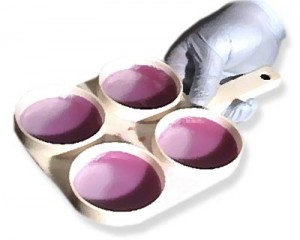In this post, I will finish the previously started discussion on mastitis and antibiotic use in dairy cattle.
As I mentioned last time, milk from a cow with mastitis may enter the bulk tank to be used for human consumption BEFORE the cow has been treated with antibiotics. You don’t have to worry about any somatic cell clumps getting into your glass of milk, however, because the milk is filtered extremely well before entering the bulk tank. It is filtered and tested repeatedly at the processing plant as well. If the milk does not meet the required quality standards, it is disposed of so that it cannot enter the food supply.
You also have no need to worry about antibiotics being present in the milk you drink. Dairy farmers ONLY treat their cattle with antibiotics when they are SICK and the cow needs the antibiotics to fight the illness and recover. When a cow is treated with an antibiotic, she is clearly identified so that her milk does not accidentally enter the bulk tank. Cows that are treated with antibiotics are always milked last to ensure that the antibiotics in the milk do not contaminate the milking equipment. When treated cows are milked, the milk is directed away from the bulk tank and dumped. The cow’s milk cannot enter the bulk tank again until after the required withdrawal period. A withdrawal period is the amount of time specified on a drug label that states how long a farmer must wait after a cow receives her most recent antibiotic treatment before the antibiotic is naturally cleared from the cow’s system and her milk can safely re-enter the food supply. There are also withdrawal periods that specify how long it takes for the antibiotic to clear itself from muscle tissue and it is safe for the animal to be slaughtered for meat.
In addition to complying with withdrawal periods, farmers can also ensure that it is safe for a cow’s milk to re-enter the food supply by performing on-farm antibiotic tests. Milk is also tested for antibiotics on the farm by the milk truck before it is loaded onto the milk truck and at the milk processing plant. With all of these tests to ensure milk quality and purity, milk is the most tested food by the Food and Drug Administration and is the safest food that you can consume.
Both subclinical and clinical mastitis can typically be treated by the farmer without the presence of a veterinarian; coliform mastitis, however, is much more serious and sometimes may require veterinary assistance. In clinical mastitis, the milk maintains its white color even though it contains clumps of leukocytes; in coliform mastitis, the milk will often appear clear or extremely watered down (and it may or may not contain clumps). The affected cow will often go off feed and will likely suffer from a decrease in body weight, a decrease in milk production, and weakness. In addition to intramammary antibiotics, cattle are typically given an IV of a hypertonic saline solution and possibly dextrose (sugar) or calcium. Subclinical and clinical mastitis cases should be treated as soon as possible to prevent them from developing into coliform, and coliform cases should be taken very seriously, as they could result in the death of the animal.



